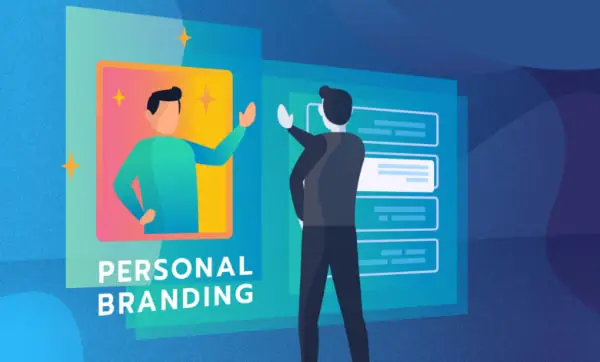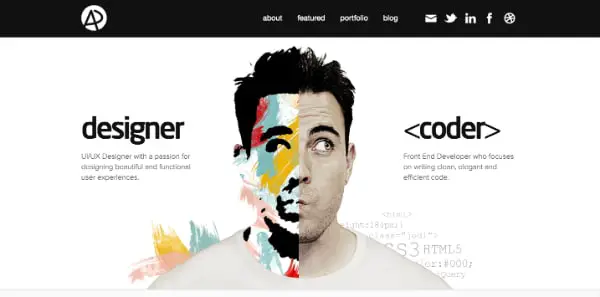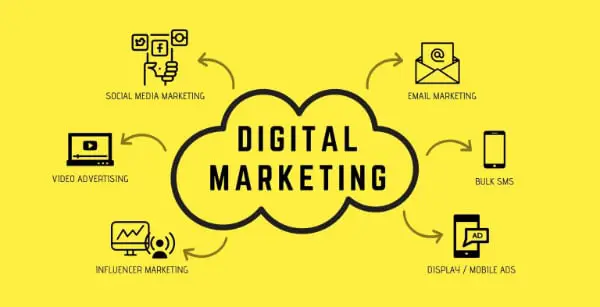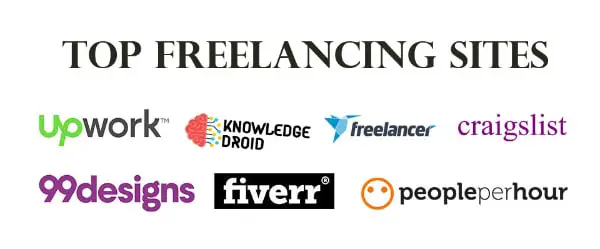Line25 is reader supported. At no cost to you a commission from sponsors may be earned when a purchase is made via links on the site. Learn more
The world is quickly shifting to a freelance economy. The pandemic has further fueled the “gig” economy by boosting the concept of remote working. According to Statista, there are around 67.6 million freelancers in the US alone, and this number will grow to 90 million in the next six years. This shows by their fair amount of competition in this sector, which will further rise in the years to come. So How do you stand out and brand yourself?
It has become important for freelancers to brand themselves in the best possible way to attract more work and create a good reputation in your sector. With the volume of the crowd ever-increasing, you must stand out to be noticed. For this, we have collated 12 branding tips for freelancers that will help boost your income. These tips are relevant to all types of freelancers, irrespective of whether you are a graphic designer, website developer, or content writer.
1. Treat Yourself as a Client

The biggest reason freelancers cannot build a brand for themselves is that they do not spend time and resources on it. The question is not about lack of potential or aptitude. But it is about lack of intent and also priority. You will work for hours to build your client’s brand but not spend a few hours building yours. There is always big inertia stopping you from this task.
One good way to mitigate this problem is to treat your brand as a client. Push it up the priority list. Create Asana or Trello cards for it and assign tasks and deadlines. The moment you start doing this in a structured manner, you will see good results. The initial few weeks may seem tough, but then it will become a standard operation in your workweek. This will allow you to have the working bandwidth to execute the other tasks mentioned in the list.
2. Identify and Understand your Target Audience

Branding needs to be seen as a holistic component of your marketing yourself. The first step of marketing is to identify who your target audience is. This will vary for freelancers based on what their skillsets are. You can further classify your audience into different categories based on their payment capacity, project timelines, demographics, and more, even in the market segment.
Once you have identified your target audience, the next step is to study and understand them. This understanding will offer you key insights into how you want to brand yourself. For example, do you want to come across as an expert freelancer charging top money or a versatile service provider charging less amount but getting more work? This market segmentation will help you direct your branding efforts in the right direction and get quick and effective results.
3. Create a Branding Plan and Guideline for Yourself

If you are a designer, you already know the importance of branding plans and guidelines and how they can be very useful. Just like a business plan guides the entire business process, a branding plan will help you in your branding journey. In addition, the insights you gather from the above point of understanding your target audience will be useful in the plan.
Ideally, you can carry out a SWOT analysis (Strengths, Weaknesses, Opportunities, and Threats) of your brand. You should also study what successful freelancers in your field are doing. Based on all these inputs, you should develop your branding plan. The first aspect of the plan will be to create your brand identity. Come up with a nice logo and other visual elements that can be consistently used across all branding collaterals. Do check out the latest design trends to ensure that your designs are relevant and effective.
4. Have a Functional & Updated Portfolio Website

The next step in your branding journey will be to create your online presence. This should be in the form of a portfolio website. There are many good website builders like Wix, Divi, and WebFlow that you can use to create an amazing looking site, but still stay within a budget. Otherwise, you can use a WordPress theme and flow your content in it. Creating a portfolio website has become so easy now that you would be considered an odd one out if you do not have one.
A good tip would be to look at how other freelancers are showcasing your work. Then, make sure to keep updating the online portfolio with the latest work. Also, it is advisable not to dump all your work on the portfolio, rather have a more structured and classified form of a portfolio. Finally, along with the online portfolio, you should also have an offline document that you can send across in an email when pitching for new work.
5. Leverage Social Media and Other Digital Mediums

If, as a freelancer, you do not have a social media presence, then you are missing out on a good opportunity to brand yourself. Having an active social media presence is imperative with the rising digital marketing push. And not just standard social media, but you should also leverage other platforms such as Pinterest, Medium, or YouTube based on your line of work.
Once your branding is ready, you should immediately apply it on your social media platforms. Even though Instagram is more cool and happening, do not rule out Facebook from your social media activities. If you are a content writer and regularly come up with interesting blogs, you should also leverage LinkedIn to help you get good traction. The overall results of social media presence may not be tangible, but it does help in bettering your SEO score and giving your skills a better brand positioning in the market.
6. Leave Your Mark on Your Work

All freelancers have their working style, which is reflected in the final out. Content writers have their way and tone of writing. Graphic designers work on their projects in their unique approach. The resultant products are quite personalized work. This inherent style can be an important part of your overall branding.
Over some time, you can further polish this style and make it more prominent. This style can make your work stand out from the crowd. It can also add a recall factor as people aware of your style will identify that you have done it. Keep in mind that while having your style in your work is good, it should not override the client’s creative brief.
7. Create a Niche but Keep Improving

Everyone cannot be good at everything – this is something that you should acknowledge and respect as a freelancer. It is better to find out what you are good at and what is in demand. Based on this intersection, you can figure out the niche you want to target. Then you should work hard towards mastering that particular stream.
Some may be good at packaging design; some may be good for website design. When it comes to content, some may be creative writers while some prefer technical writing. The good news is that there is much work and scope in all such streams. However, the key is to get good at it and carve your niche. Then you can brand yourself as an expert for that particular line of work and get more promising work.
8. Establish Long Term Relationships with Your Clients

The biggest challenge for freelancers is to find quality work. The gig economy has many perks, but the biggest shortcomings are that freelancers have to start hunting for another project when one project is over. However, according to research by Statista, 41% of US Freelancers find work through their past clients. This shows how important this medium of business development can be and if you consider one of the all-time most important branding tips for freelancers, it would be this one.
Having a good cordial relationship with your clients even after the project is over can be very beneficial. You will never know when you can get work from them again or if they refer you to someone else. Word of mouth is considered to be the most trusted way clients like to hire freelancers as they have someone in between to vouch for your work. To cultivate a good relationship with the client, ensure good communication, and walk the extra mile if needed. There are good chances that it will pay off sooner or later.
9. Get Reviews or Testimonials from Clients

As mentioned above, past clients are always a good source of getting you new work. One way of that is them engaging again with you or referring you to another client. Another good way they can be helpful is by providing you with good reviews or testimonials. They can help you not only boost your reputation but also convince potential clients for work.
Many good portals for reviews like Trustpilot, Yelp, and even Google reviews are there, which you can use for gathering reviews. You can always politely request the client for their feedback on the work on these platforms. In addition, many freelance portals like Upwork have mandatory feedback mechanisms that can be leveraged. It is a good practice to include the best reviews on the online portfolio that you create.
10. Spend in Automation

This tip is not just about increasing your branding but also about making you more efficient. In the last five years, a lot of automation has come in digital marketing, and if you have not started utilizing them already, it is better that you start now. First, you should conduct due diligence on the types of automation available and then select the ones that best meet your needs.
Automation tools range from workflow management tools like Asana or Trello or communication ones like Slack. You should also start using a social media management tool like HubSpot or Buffer to save time and keep your social media handles active. Apart from these, there are also good online tools like Grammarly for making sure your grammar is perfect and Canva for creating images, social media posts and much more for free. You can use Shutterstock or Adobe Stock, or Vecteezy subscriptions for stock images.
11. Network at the Right Places

Networking continues to be one of the most efficient ways of getting work for freelancers. Networking need not be done in person. The pandemic has changed a lot of ways we work, and one of them is the way we network. Now webinars, online conferences, and meet-ups are the new trend in meeting new people or networks in your sector. So whenever you get an opportunity to network through any medium possible, do not miss out on it.
Apart from the conventional online and offline modes of networking, we also have social media and other platforms to interact with people. There are many designs or content communities that you can join. Also, you should not network with the sole purpose of getting work. Rather treat it as an opportunity to meet people, learn new things, and have new experiences.
12. Do Not Keep All Eggs in One Basket

The adage is very relevant for freelancers. Many rely heavily on a single platform for getting work. It is not their fault alone, as each freelancing portal offers a lot to the freelancers to keep them exclusive. However, it is safe to have your source of work varied out. Depending on the type of work you are doing, you should earmark various platforms and sources to help you get work.
One good practice would be to set up your freelancing profile on multiple platforms like Upwork, Fiverr, Freelancer and more. Another advantage of this is that you will get a variety of work from the different portals, which will help you build a stronger portfolio. You may get distracted when one portal keeps giving you a lot of work on an operational level. But you should remember to keep your profile active on the other portals and source work from them.
Conclusion:
Life as a freelancer is always full of ups and downs. Hence you should always be patient and trust your skills. Along with that, you also need to actively work on your branding. The above tips will go a long way in helping you create your brand as a freelancer and stand out from the crowd. The key is to prioritize the branding part, directly linked to your marketing. The better your brand positioning as a skilled freelancer, the better your chances of getting quality work and boosting your income.
